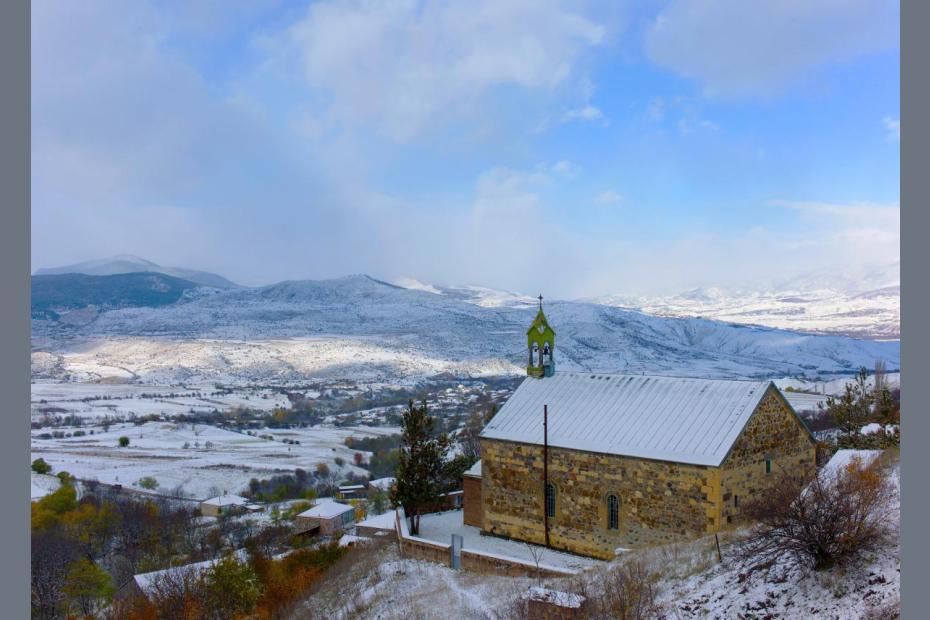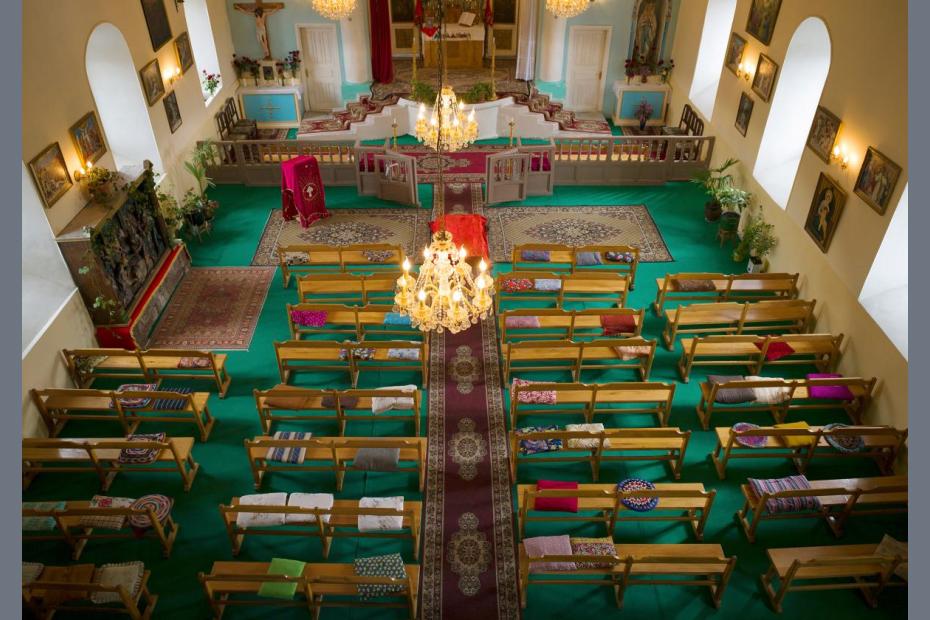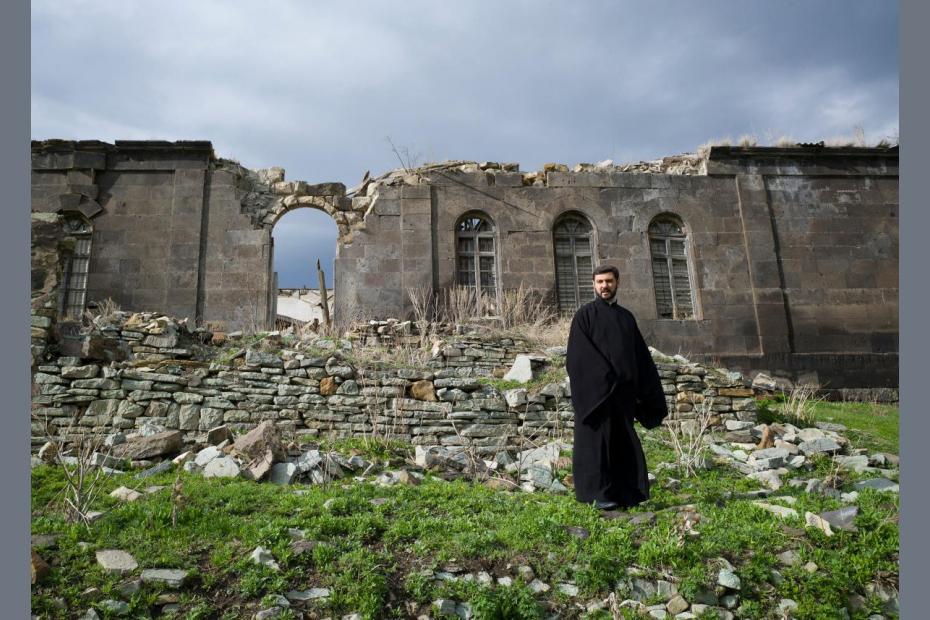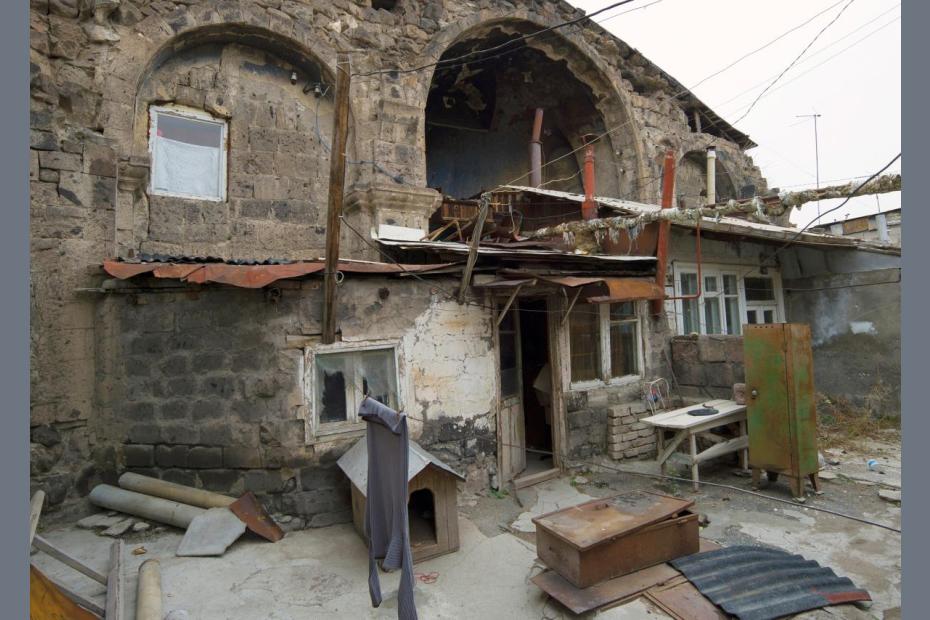Armenian Catholic churches are characterized by architectural simplicity. Most were built in the second half of the 19th century, after Armenian Catholics moved to the areas they now inhabit from Western Armenia, their historic homeland, which was then a part of the Ottoman Empire. The temples are usually hall churches, small in size, with stone walls and wooden roof structure. These humble buildings were erected from the meager funds of local rural communities.
They traditionally have two entrances — one opposite the altar, the other on the side. In places where the old customs have been kept alive (especially in the Samtsche region of Georgia), the side entrance, which leads to the front part of the temple, is reserved exclusively for men. The back door is used by women, who occupy places farther away from the altar, including on wooden balconies above the entrance. Some Georgian Armenian-Catholic villages also preserved the traditional interior design of their churches, with a lavishly decorated altar resembling an Orthodox iconostasis but with a Eucharistic table visible to worshippers. Other typical elements include statues of saints and colorful carpets, floor covers and cushions.
Many Armenian Catholic churches fell into ruin in the communist times, when they were deserted, or turned into storehouses. In Armenia, further destruction was wrought by two earthquakes, which struck the Catholics’ home region of Shirak in 1926 and 1988. In the 25 years since the fall of the Soviet Union only some churches have been restored, others remain a silent testimony to a difficult past.
The Armenian Catholic Surb Khach (The Holy Cross) church in the city of Gyumri (Armenia), where administrative center of the Armenian-Catholic Ordinariate of Eastern Europe is located, was destroyed during the 1926 earthquake. Deserted for decades, over time it was gradually surrounded by dense residential development. Finally, several families moved into the remnants of the church itself. Few inhabitants of Gyumri now remember about the former temple, while a new Armenian-Catholic cathedral was consecrated in 2015 just several hundred meters away.



